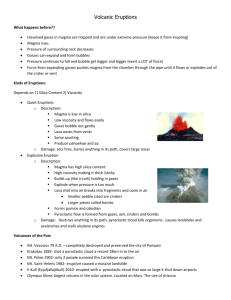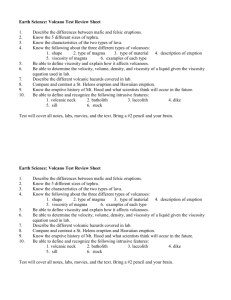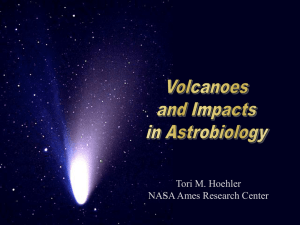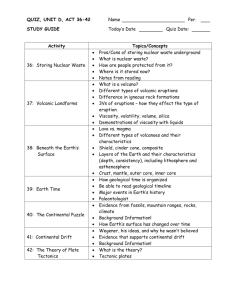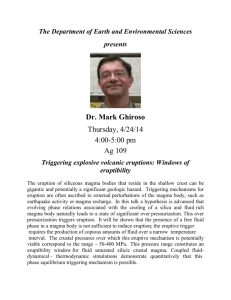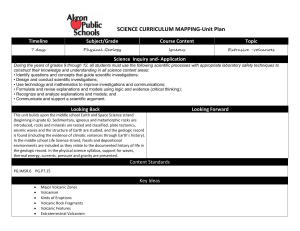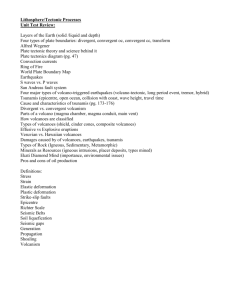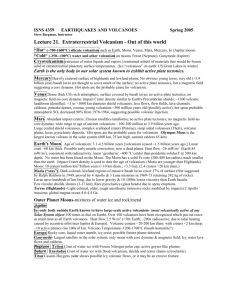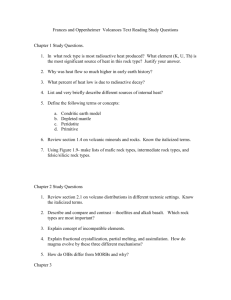Volcanism - West Virginia University
advertisement
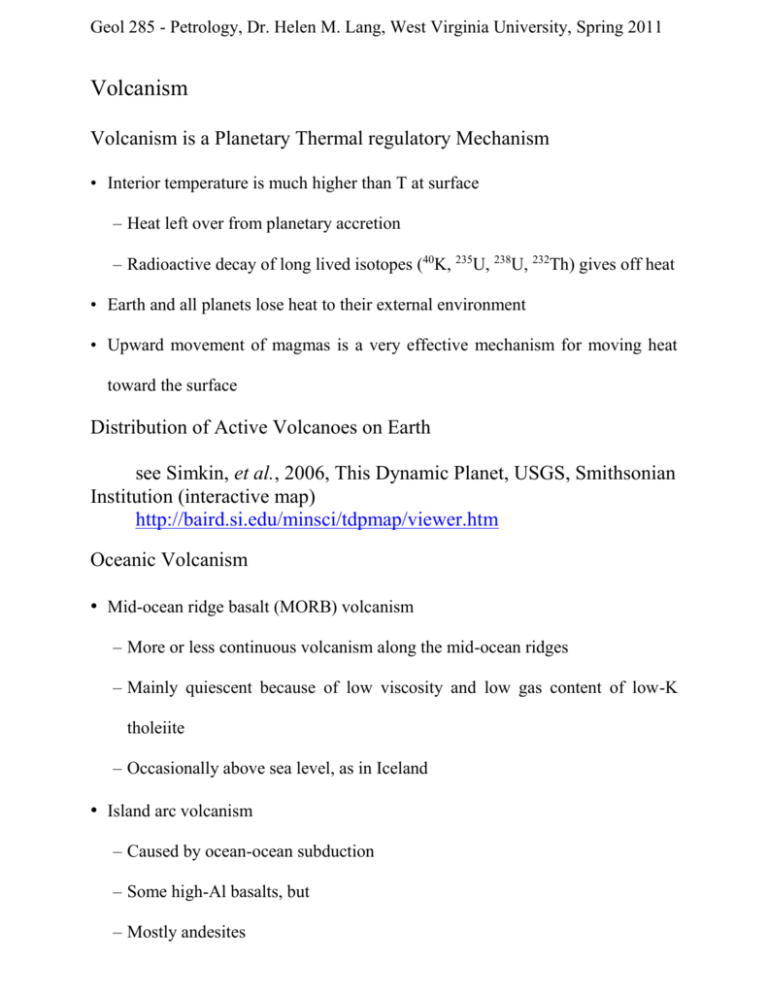
Geol 285 - Petrology, Dr. Helen M. Lang, West Virginia University, Spring 2011 Volcanism Volcanism is a Planetary Thermal regulatory Mechanism • Interior temperature is much higher than T at surface – Heat left over from planetary accretion – Radioactive decay of long lived isotopes (40K, 235U, 238U, 232Th) gives off heat • Earth and all planets lose heat to their external environment • Upward movement of magmas is a very effective mechanism for moving heat toward the surface Distribution of Active Volcanoes on Earth see Simkin, et al., 2006, This Dynamic Planet, USGS, Smithsonian Institution (interactive map) http://baird.si.edu/minsci/tdpmap/viewer.htm Oceanic Volcanism • Mid-ocean ridge basalt (MORB) volcanism – More or less continuous volcanism along the mid-ocean ridges – Mainly quiescent because of low viscosity and low gas content of low-K tholeiite – Occasionally above sea level, as in Iceland • Island arc volcanism – Caused by ocean-ocean subduction – Some high-Al basalts, but – Mostly andesites – Also some dacites and rhyolites – Higher in SiO2 and viscosity, and more explosive than MORBs – Common in the West Pacific • Oceanic island volcanism – Related to hot-spots or hot localized plumes of rising mantle – Hawaii and other oceanic islands Pacific Ocean Floor Topography Linear Age/Distance Relation indicates ~constant rate of motion of Pacific Plate over the Hawaiian Hot Spot The Hawaiian Islands Five Volcanoes on the ‘Big Island’ of Hawaii show earliest stages Classic Shield Volcanoes, 5-10o slope Stages in the History of a Typical Hawaiian Volcano 1. 2. 3. 4. 5. 6. 7. Mauna Loa and Kilauea show shield building stage, subaerial substage (2c) Kilauea Caldera from the air Recent eruptions of Kilauea A’a lava flows (A’a is blocky, rough, jagged, with a spiny surface) Pahoehoe Flows (smooth, billowy, ropy surface) Maps and Photos of Recent Kilauea Eruptions 1983 – present Pu’u O’o eruptions are most voluminous from the East Rift of Kilauea in 500 years Mauna Kea represents the Capping Stage (3) Review Volcanic History The Hawaiian Islands Haleakala Volcano – East Maui renewed volcanism stage (5) after erosional stage (4) Rocks at Haleakala Summit (renewed volcanism - Stage 5) Continental Volcanism • Continental Arc Volcanism – Continental Margin Volcanism – When oceanic crust is subducted beneath continental crust Continental Margin Volcanism Stratovolcanoes or Composite Volcanoes Interlayered Pyroclastics & Lavas Typical Platy Andesite Continental Volcanism • Continental Flood Basalts – Tholeiites – Columbia River Basalts (CRBs) - Miocene – Deccan Flood Basalts (NW India, Bombay) – Cretaceous-Eocene • Continental Rift Basalts (East African Rift) – Alkali Basalts Columbia River Basalts Distribution of Active Volcanoes on Earth Eruptive Styles: Plinian • Large explosive events that form enormous dark columns of tephra and gas high into the stratosphere, described by Pliny the younger in relation to the disastrous 79 A.D. eruption of Vesuvius Eruptive Styles: Phreatic Eruptions • Phreatic eruptions are steam-driven explosions that occur when water beneath the ground or on the surface is heated by magma, causing water to boil and flash to steam, thereby generating an explosion of steam, water, ash, blocks and bombs Nuée Ardente, ash flow or pyroclastic flow, Peléean eruption • A ground-hugging avalanche of hot ash, pumice, rock fragments, and volcanic gas that rushes down the side of a volcano as fast as 100 km/hr; temperature within the flow may be greater than 500C Eruptive Styles: Strombolian • Intermittent explosion or fountaining of basaltic lava from a single vent or crater, produces cinder cones like Stromboli in the Mediterranean (lower photo) Controls of Eruption • Composition and viscosity – SiO2 and to a lesser extent Al2O3, control viscosity of magmas, because they form polymers in magma – basalt viscosity at eruption T – 102-104 pascal-sec. – andesite viscosity at eruption T – 104-106 pa-s – rhyolite viscosity at eruption T ~ 1010 pa-s (up to one-hundred million x higher than basalt) • Dissolved magmatic gases – H2O>>>CO2>>F2,Cl2, N2, SO2 (or H2S) – Solubility of gases decreases with decreasing Pressure – Boiling (formation of bubbles) caused by magma rise and crystallization Boiling of Magma • Boiling is separation of gas from a liquid • Evolution of gas produces bubbles which rapidly expand and rise to the top of the chamber • Volume expansion of bubbles fragments the surrounding liquid into tiny fragments and clasts, and provides the driving force for eruption • Rapid and continuous magma ascent – Plinian eruption • Continuing gas evolution and magma fragmentation at low to moderate ascent rates – Cinder cones • Stagnation and gradual outgassing of magma below a vent plug – Strombolian eruption
